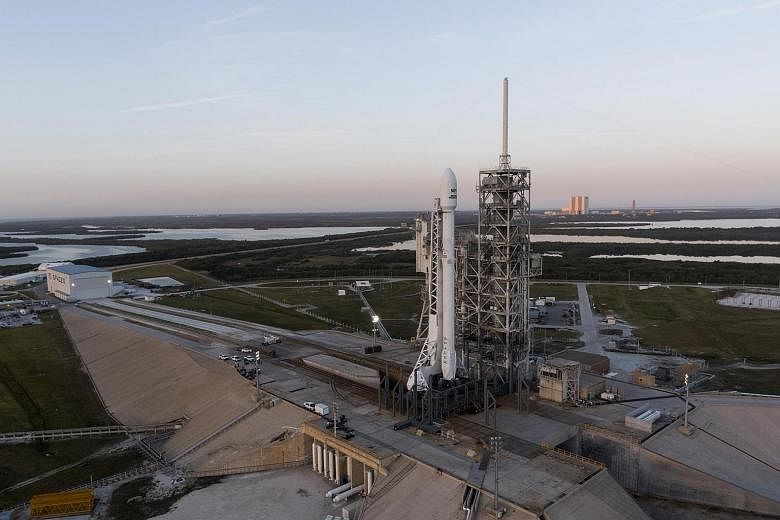MIAMI (AFP) - SpaceX blasted off a recycled rocket for the first time on Thursday, using a booster that had previously flown cargo to the astronauts living at the International Space Station.
The rocket rose into the sky over Cape Canaveral, Florida at 6.27 pm (2227 GMT), on a mission to send a communications satellite for Luxembourg-based company SES into a distant orbit.
"No one has ever done this before," said SpaceX chief operating officer Gwynne Shotwell in a video statement released ahead of the launch.
"This is a historic event." The white Falcon 9 rocket contained a tall and slightly scuffed, columnar portion known as the first stage, or booster, which propelled the unmanned Dragon cargo ship to space in April 2016, then returned to an upright landing on an ocean platform.
SpaceX, the California-based company headed by visionary entrepreneur Elon Musk, has for 15 years been honing the technology of powering its boosters back to careful Earth landings on solid ground and in the water.
About 10 minutes after launch, cheers erupted at SpaceX mission control in Hawthorne, California as the re-used rocket powered its engines and landed upright on a drone ship in the Atlantic Ocean marked with the words "Of Course I Still Love You." The landing marked the ninth successful touchdown of a first stage rocket for SpaceX - six on ocean platforms, or drone ships, and three on land.
The goal of the entire effort, Musk has said, is to make rocket parts just as reusable as cars, planes or bicycles.
It is also a key part of his plan to one day establish human colonies on Mars.
Currently, millions of dollars' worth of rocket parts are jettisoned after each launch.
SpaceX officials have said that reusing hardware could slash costs - with each Falcon 9 launch costing over $61 million - by about 30 per cent.
SpaceX competitor Blue Origin, run by Amazon.com founder Jeff Bezos, has also successfully landed its New Shepard booster after launch, by powering its engines to guide it down for a controlled, upright landing.
As for the cost of Thursday's launch, Martin Halliwell, chief technology officer at SES, has declined to say publicly the exact amount.
However, he dismissed "naysayers" this week and stressed the historic nature of the launch on what he has described as a "flight-proven" rocket.
"I think we are on the edge of quite a significant bit of history here," he told a news conference.
"Now we are here to be the first-ever mission to fly on a pre-flown booster," he said.
"This is obviously hugely exciting." When the mission was announced in August, Halliwell said the deal "illustrates the faith we have in (SpaceX's) technical and operational expertise." The SES-10 satellite will be sent to a geostationary transfer orbit, flying as high as 22,000 miles (35,000km) above Earth.
The satellite aims to expand television, internet and mobile connections across Latin America.


